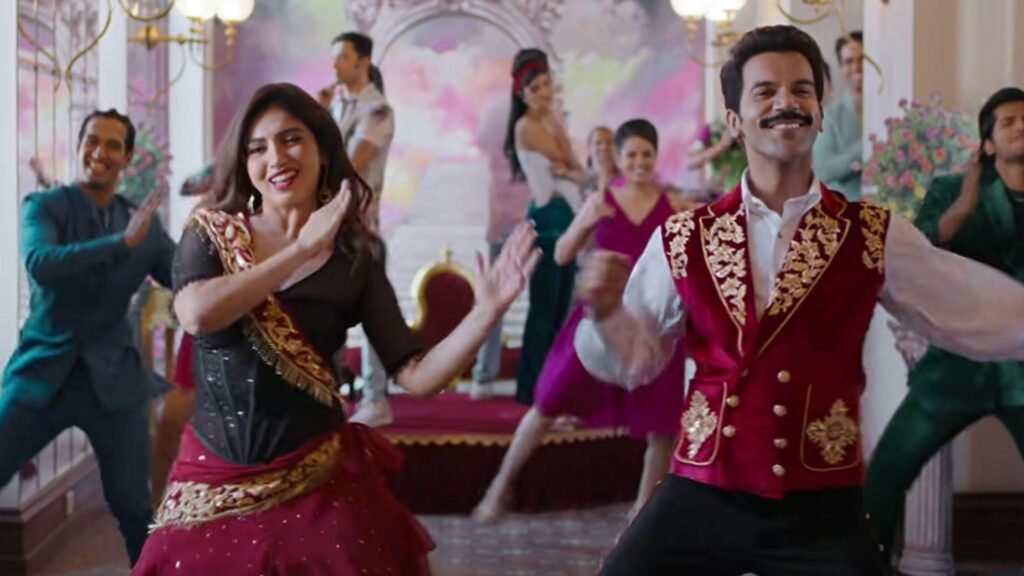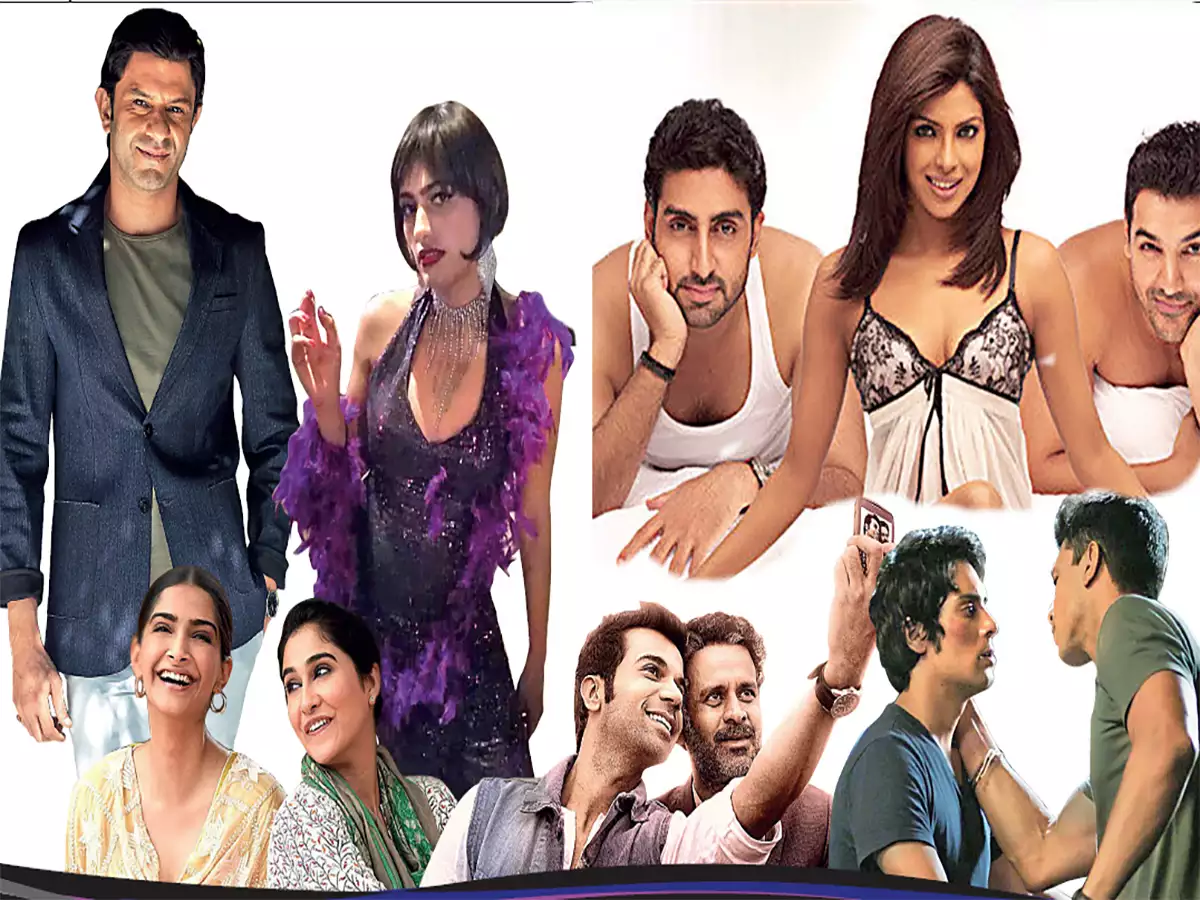Indian cinema has a complex history when it comes to representing LGBTQ+ communities. Over the decades, the portrayal of LGBTQ+ characters and stories has evolved from stereotypical and marginal representations to more nuanced and diverse depictions. This article examines the evolution of LGBTQ+ portrayal in Indian cinema, highlighting key films, trends, and the ongoing challenges and progress in representation.
Historical Overview
Early Representations
In the early years of Indian cinema, LGBTQ+ characters were either nonexistent or portrayed through stereotypes. Films that did include LGBTQ+ characters often used them for comedic effect or as secondary characters without depth.
Notable Examples:
- “Choti Si Baat” (1976): Featured a homosexual character in a minor, comedic role.
- “Khatta Meetha” (1978): Depicted a gay character in a stereotypical manner.
The 1990s and Early 2000s

The 1990s and early 2000s saw a gradual shift in the portrayal of LGBTQ+ characters, with films starting to address LGBTQ+ issues more seriously. However, these representations were often limited and still carried significant stereotypes.
Notable Examples:
- “Bombay” (1995): Directed by Mani Ratnam, this film included a brief portrayal of a homosexual character.
- “Dostana” (2008): Featured a comedic portrayal of gay men, reflecting both progress and persistent stereotypes.
Notable Films and Characters
Breaking Stereotypes
In recent years, Indian cinema has begun to present LGBTQ+ characters and stories with greater sensitivity and complexity. Filmmakers have increasingly focused on the challenges faced by LGBTQ+ individuals, offering more authentic and respectful portrayals.
Notable Films:
- “Aligarh” (2015): Directed by Hansal Mehta, this film is based on the true story of Dr. Shrinivas Ramchandra Siras, a professor who faced persecution for his sexuality. It is praised for its nuanced and empathetic portrayal of LGBTQ+ issues.
- “Bharat Anaath” (2019): Directed by Kiran Rao, this film explores the experiences of transgender individuals, offering a more respectful and detailed depiction.
Progressive Narratives
Several films have made significant strides in presenting LGBTQ+ characters in more progressive and realistic ways, contributing to the broader acceptance and understanding of LGBTQ+ issues.
Notable Examples:
- “Shubh Mangal Zyada Saavdhan” (2020): Directed by Hitesh Kewalya, this film addresses same-sex relationships and challenges traditional notions of love and family. It received positive feedback for its candid and humorous approach to LGBTQ+ issues.
- “Chandigarh Kare Aashiqui” (2021): Directed by Abhishek Kapoor, this film features a transgender character as a central figure, focusing on themes of love and acceptance.
Evolution and Trends
Increasing Visibility
The visibility of LGBTQ+ characters and stories in Indian cinema has increased over the years, reflecting broader social changes and greater acceptance of LGBTQ+ communities.
Trends:
- Mainstream Inclusion: LGBTQ+ characters are increasingly featured in mainstream films, contributing to greater visibility and normalizing diverse sexual orientations and identities.
- Diverse Stories: There is a growing focus on telling diverse and authentic LGBTQ+ stories, moving beyond stereotypes and exploring various aspects of LGBTQ+ experiences.
Changing Attitudes
The portrayal of LGBTQ+ communities in Indian cinema is influenced by changing societal attitudes and legal advancements. The decriminalization of homosexuality in India (Section 377 of the Indian Penal Code) has contributed to more open and progressive portrayals.
Impact of Legal Changes:
- Increased Creativity: Filmmakers are exploring LGBTQ+ themes with greater creativity and freedom.
- Social Acceptance: Positive portrayals in films contribute to broader social acceptance and understanding of LGBTQ+ issues.
Challenges and Criticisms
Persistent Stereotypes
Despite progress, LGBTQ+ characters in Indian cinema are still sometimes depicted through stereotypes or limited roles. There is a need for more diverse and multi-dimensional portrayals.
Common Stereotypes:
- Comedic Relief: LGBTQ+ characters are sometimes used for comedic purposes, reinforcing stereotypes.
- Marginalization: LGBTQ+ characters are occasionally relegated to secondary or peripheral roles.
Censorship and Regulation
Censorship and regulation continue to impact the portrayal of LGBTQ+ issues in Indian cinema. Filmmakers often face challenges in presenting LGBTQ+ content due to societal and regulatory constraints.
Challenges:
- Content Restrictions: Films with explicit LGBTQ+ content may face restrictions or censorship from regulatory bodies.
- Public Reception: Filmmakers must navigate societal attitudes and potential backlash when addressing LGBTQ+ themes.
Conclusion
The portrayal of LGBTQ+ communities in Indian cinema has evolved significantly, from early stereotypes to more nuanced and diverse representations. While progress is evident, challenges remain in achieving fully respectful and multi-dimensional portrayals. The increasing visibility of LGBTQ+ characters and stories reflects broader social changes and contributes to greater acceptance and understanding. As Indian cinema continues to evolve, it is crucial to support and encourage diverse and authentic representations of LGBTQ+ communities.

